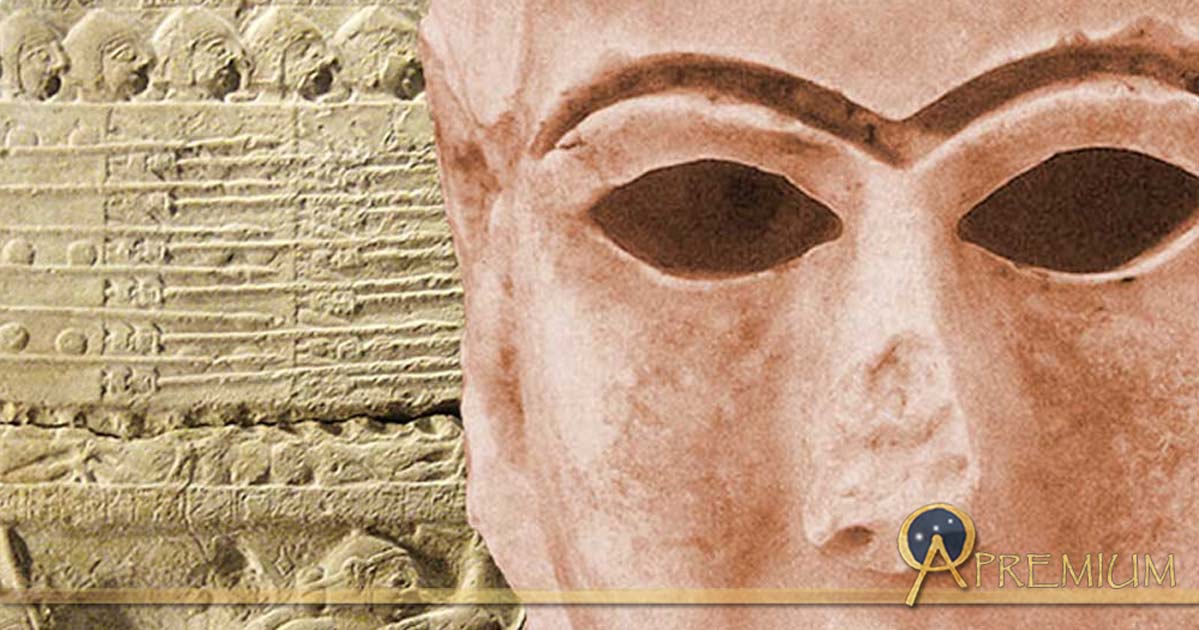The Man Who Wished to Own the World – Eannatum: The First Conqueror? Part II
Eannatum’s tour of Elam, Urua, and Umma paid off. He controlled provinces and regions rich with resources. He had metal to produce weapons and fertile fields to grow food—both of which were used to feed and arm his forces. Eannatum was far from finished. With an increase in resource-rich lands came an increase in manpower to replenish and increase the size of his ranks. Eannatum was drunk with power and looked west to quench his thirst.
With Eannatum’s eastern flank secured, the west was ripe for the taking.

Goddess Nisaba with an inscription of Entemena, ruler of Lagash (2430 BC) (CC BY-SA 3.0)
Grabbing up Valuable Resources
The king led his forces to the city-state of Uruk. Uruk was important for a number of reasons – the first of which is that it sat along the Euphrates River and not far from the Persian Gulf, making it a valuable trading city by both land and sea. Second, Uruk’s population was rather large and prosperous, and surrounded by fertile fields, making it desirable in terms of supplying the army with food and swelling the ranks with additional troops.
With Uruk conquered, Ur came next and its armies were put to the sword. Ur was also a valuable trading center and offered a strategic location near the mouth of the Euphrates River that led into the Persian Gulf. Unlike the lands of Elam, the only thing put to the sword in both Uruk and Ur was the military forces sent out to oppose the armies of Lagash. Uruk and Ur were valuable, providing much for an army on the march.

Lugal-kisal-si, king of Uruk (Public Domain)
Uruk and Ur were also important for their strategic positions. To the east were the other various city-states like the one that just conquered them—Lagash; to the north were more city-states of various sizes; and to the south was the Persian Gulf which was used for importing and exporting resources. Imports that came up the Tigris and Euphrates Rivers and exports that flowed down the rivers and out to the sea made their way to far distant lands. To the west lay a great desert that in and of itself was a natural barrier against any unwanted intruders. Three natural barriers, the Zagros Mountains to the east, the desert to the west, and the Persian Gulf to the south, surrounded Eannatum’s empire. Eannatum’s only true threat came from the north.

The ancient cities of Sumer. (CC BY 3.0)
Pushing into the North – Zuzu Fights Back
After the southern portion of Sumer was conquered, Eannatum began his march north. His campaign towards the north involved Elam again, as the city-state of Mishime was conquered. It is possible that the city of Mishime was conquered during his first campaign, and the reason may be due to rebellion, in hopes other Elamite city-states would join in the fight to break free from Lagash control. After Elam, Eannatum made his way north, eyeing a prize-worthy, religious target known as Kish.
However, before he could make his way to Kish, Zuzu, the king of Akshak, had had enough of Eannatum’s war-making and went out to confront the man who wished to own the world…
This FREE PREVIEW is just a taste of the great benefits you can find at Ancient Origins Premium.
Join us there ( with easy, instant access ) and reap the rewards: NO MORE ADS, NO POPUPS, GET FREE eBOOKS, JOIN WEBINARS, EXPEDITIONS, WIN GIFT GIVEAWAYS & more!
- The Spectacular War Helmet of Meskalamdug, the Powerful King of Kish
- The Legacy of Armenia: Trade, Metallurgy, and Forging of Precious Metals of the Ancient World
- Roger de Flor and His Catalan Company: From Knight Templar to Pirate – Part I
- The Kesh Temple Hymn: 5,600-Year-Old Sumerian Hymn Praises Enlil, Ruler of Gods
Top Image: ‘Mask of Warka’, marble head from Uruk, ancient city of Sumer (Public Domain) and battle formations on a fragment of the Stele of the Vultures (CC BY-SA 3.0);Deriv.
By Cam Rea





















Comments
And so it was ever since that we have managed to organize humanity to a mega society, always given to the hands of the few who had the capacity and the appetite to control it while the rest have become little more than tiny screws in a hierarchical and an alienated structure.